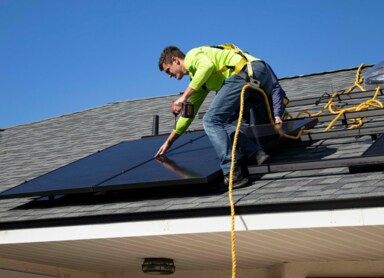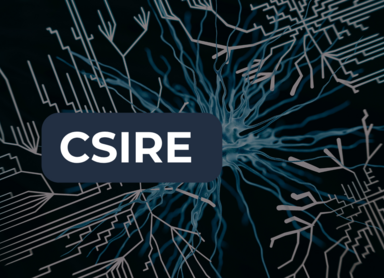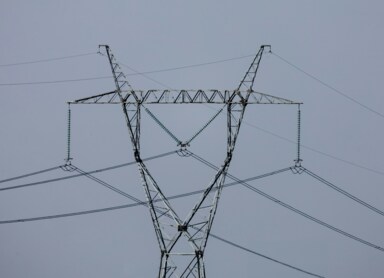Renewable energy grant. Everything you need to know to receive funding
Obtaining energy from renewable sources and reducing (ideally, completely eliminating) the use of fossil fuels in this process is the main goal of the energy transition. The proper course of this change depends largely on the development of infrastructure that allows for the production of adequate amounts of green energy. Therefore, in addition to the European Union's requirements in the area of climate neutrality (the “Green Deal” policy), EU member states are also receiving tools that are intended to help them achieve their goals. One of these is the RES grant.
What is a renewable energy grant?
A renewable energy grant is a support tool covering 50% of the net costs of a project, available for the purchase, installation, construction, or modernization of renewable energy installations. The RES grant in Poland is operated by Bank Gospodarstwa Krajowego, and the solution was introduced in the Act of September 29, 2022, amending certain acts supporting the improvement of housing conditions.
The act was created to implement measures in line with the National Recovery and Resilience Plan and is financed under NextGenerationEU, a temporary recovery instrument that focuses in particular on supporting small and medium-sized enterprises and measures promoting energy transition.
Who, when, and where can apply?
Applications for the RES grant are accepted on an ongoing basis. The call for applications will remain open until June 30, 2026. Applicants should submit their documents in paper form to the headquarters of Bank Gospodarstwa Krajowego. Investors, regardless of their legal status, who own or manage a multi-family building, i.e.:
- housing communities and cooperatives,
- local government units,
- commercial law companies,
- natural persons,
- social housing initiatives, and social housing associations.
Budgetary units and local government budgetary establishments are not eligible to apply for RES grant funds.
What can the Renewable Energy Grant (OZE Grant) be used for?
The OZE Grant is available if the project focuses on the construction of a new renewable energy installation or the modernization of an existing renewable energy installation, provided that the funding results in at least a 25% increase in capacity.
Importantly, the grant is only awarded if the installation funded will produce energy for the needs of the building that is the subject of the project, does not cause significant environmental harm, and meets horizontal criteria.
In addition, the funds cannot be granted for projects that have already started.
Horizontal Criteria – What Should You Know?
Horizontal criteria are principles that apply to all projects seeking funding under the National Recovery and Resilience Plan (KPO). These include, among others: no double financing (i.e., not receiving funds from multiple EU sources for the same purpose), the financial situation of the final beneficiary and financial feasibility of the project, compliance with the “Do No Significant Harm” (DNSH) principle, rational use of natural resources, and a long-term impact on the productivity and resilience of the Polish economy. There are a total of 13 horizontal criteria, detailed in a specific annex.
The DNSH Principle – Key to the OZE Grant
To prevent funding of projects that might harm the environment, the European Commission introduced the DNSH rule ("Do No Significant Harm"). This is a key requirement for applicants for the OZE grant. Beneficiaries must be able to present documentation confirming compliance with DNSH requirements during potential inspections.
The Ministry of Development and Technology has prepared a special guide listing documents and studies that must be provided by beneficiaries to pass potential audits.
What Should the OZE Grant Application Include?
The application for the OZE Grant should include the following information: investor's data, data on the building subject to the OZE project, details of the OZE installation (type, scope, gross and net costs), data necessary to calculate the anticipated annual CO₂ emissions avoided thanks to the project, general statements by the investor, declarations regarding de minimis aid specific OZE grant declarations.
You also need to attach:
- The project documentation for the installation
- Documents confirming the authorization of persons signing the application to represent the investor
- A specimen signature of the signatory/ies
Applications are accepted on a rolling basis until June 30, 2026, at the Bank Gospodarstwa Krajowego (BGK) headquarters.
Project Documentation – What Should It Include?
The project documentation must correspond to the scope of work defined in the application. Its goal is to confirm the technical details of the project, including:
- Scope of work and estimated costs of the OZE project
- Electrical and thermal power of the installation
- Anticipated annual energy production (electricity or heat)
The documentation must be prepared and signed by a licensed professional, as it will be verified by the energy utility when connecting the installation to the grid. Important: project documentation can be considered an eligible cost, as long as its preparation and payment occurred after January 30, 2020.
Additional Obligations of OZE Grant Beneficiaries
Grant recipients are required to undertake communication activities related to the funding. These include: clearly stating the source of funding in all promotional materials, placing a description of the project on their website (if they have one), providing information about the project to various stakeholder groups. All communication obligations are listed in an annex on the Bank Gospodarstwa Krajowego website.






